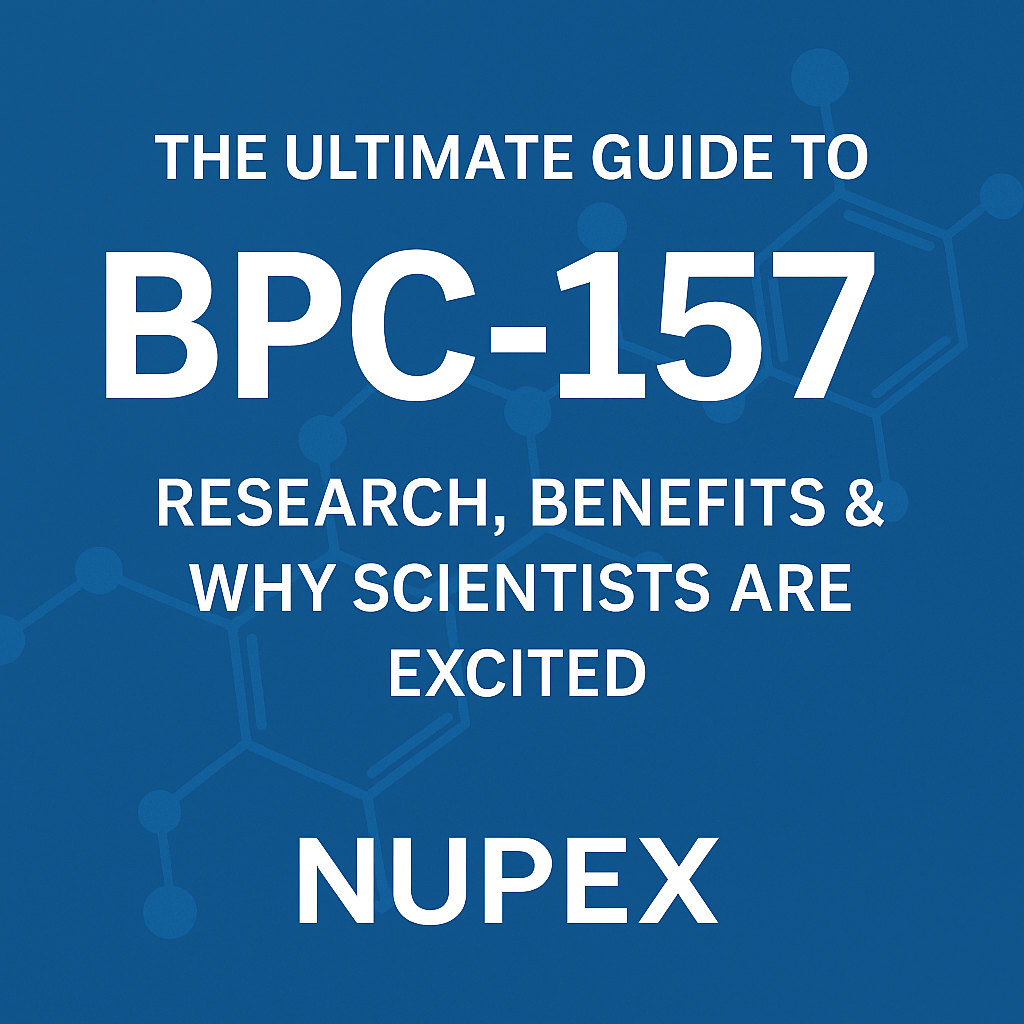
The Ultimate Guide to BPC-157 Benefits for Research
Share
BPC-157 is one of the most exciting peptides in research today, showing incredible promise for tissue repair, gut health, and even brain function. But what exactly is it — and why is the scientific community buzzing about it?
What is BPC-157?
BPC-157 (Body Protection Compound-157) is a synthetic peptide derived from a naturally occurring protein in human gastric juice. It’s composed of 15 amino acids and has been extensively studied for its regenerative properties in muscles, tendons, and the nervous system.
Fun fact: In rodent studies, BPC-157 accelerated wound healing, protected organs, and even countered harmful effects of NSAIDs on the stomach lining.
Research Highlights on BPC-157
-
Tissue Healing: Studies suggest BPC-157 may promote rapid tendon, ligament, and muscle healing.
-
Gut Health: Research points to strong protective effects against gastric ulcers and intestinal inflammation.
-
Neurological Support: Emerging evidence shows potential in reducing brain inflammation and supporting nerve repair.
(Sources: PubMed, International Journal of Molecular Sciences)
Why Researchers Choose Nupex BPC-157
At Nupex, we supply >98% purity BPC-157, sourced under strict quality standards for laboratory research use only.
Every batch is backed by COA (Certificate of Analysis) testing — ensuring purity, consistency, and reliability for your research.
🧪 View Our BPC-157 Product Here
How BPC-157 Could Shape the Future of Health Research
Scientists are investigating BPC-157 for potential applications in:
-
Sports injury recovery
-
Post-surgical healing
-
Gut and intestinal disorders
-
Neuroprotection and brain health
While BPC-157 is not yet approved for human consumption or medical use, its research potential continues to expand across multiple fields.
Compliance Reminder
Nupex BPC-157 is sold strictly for laboratory research purposes. It is not intended for human use, consumption, or cosmetic applications.
